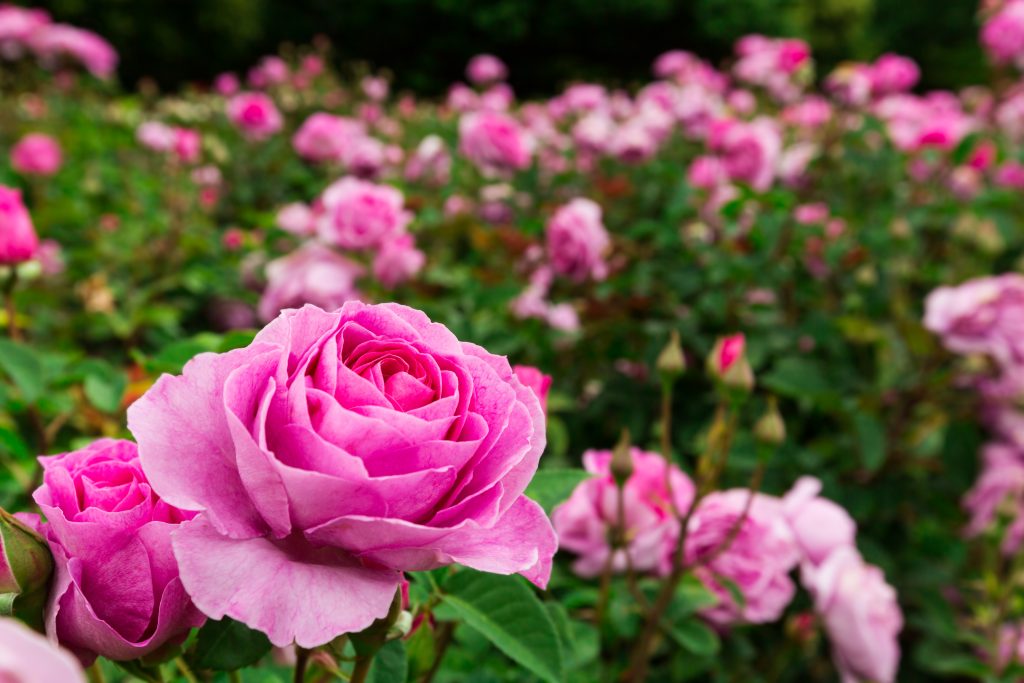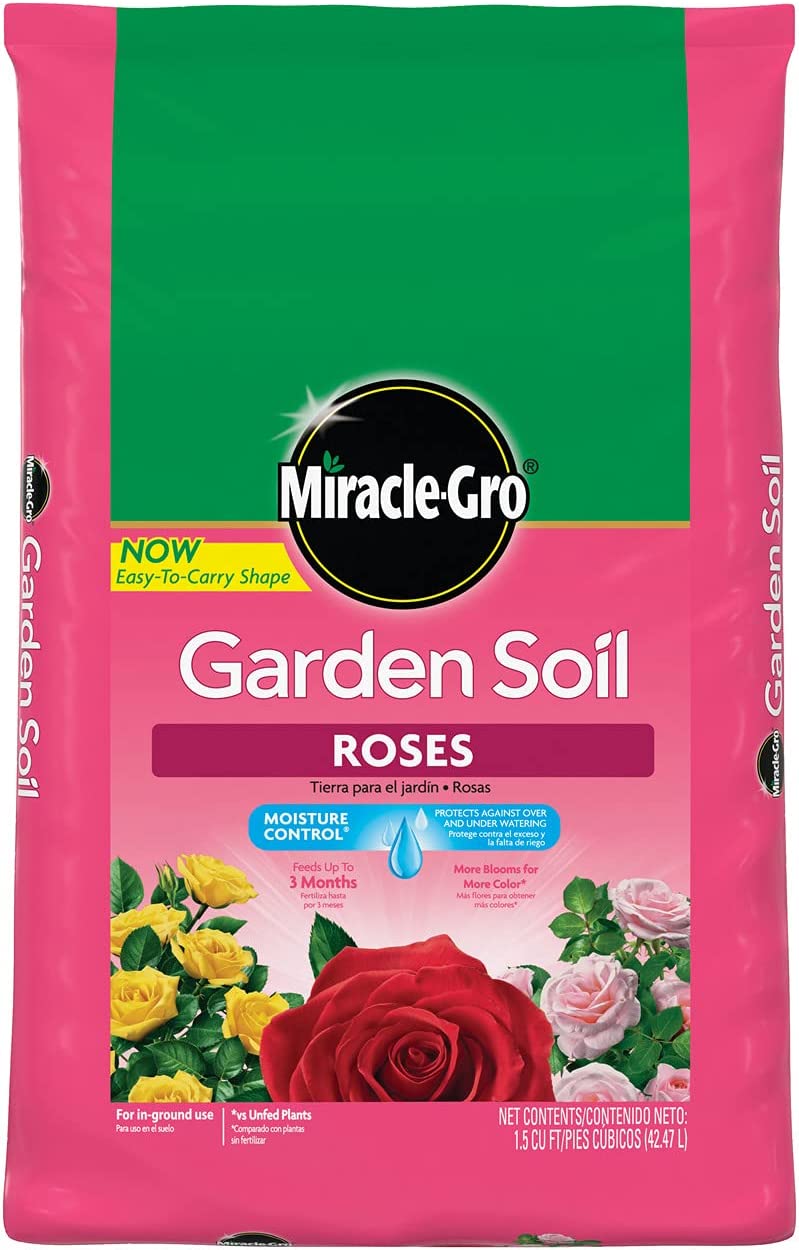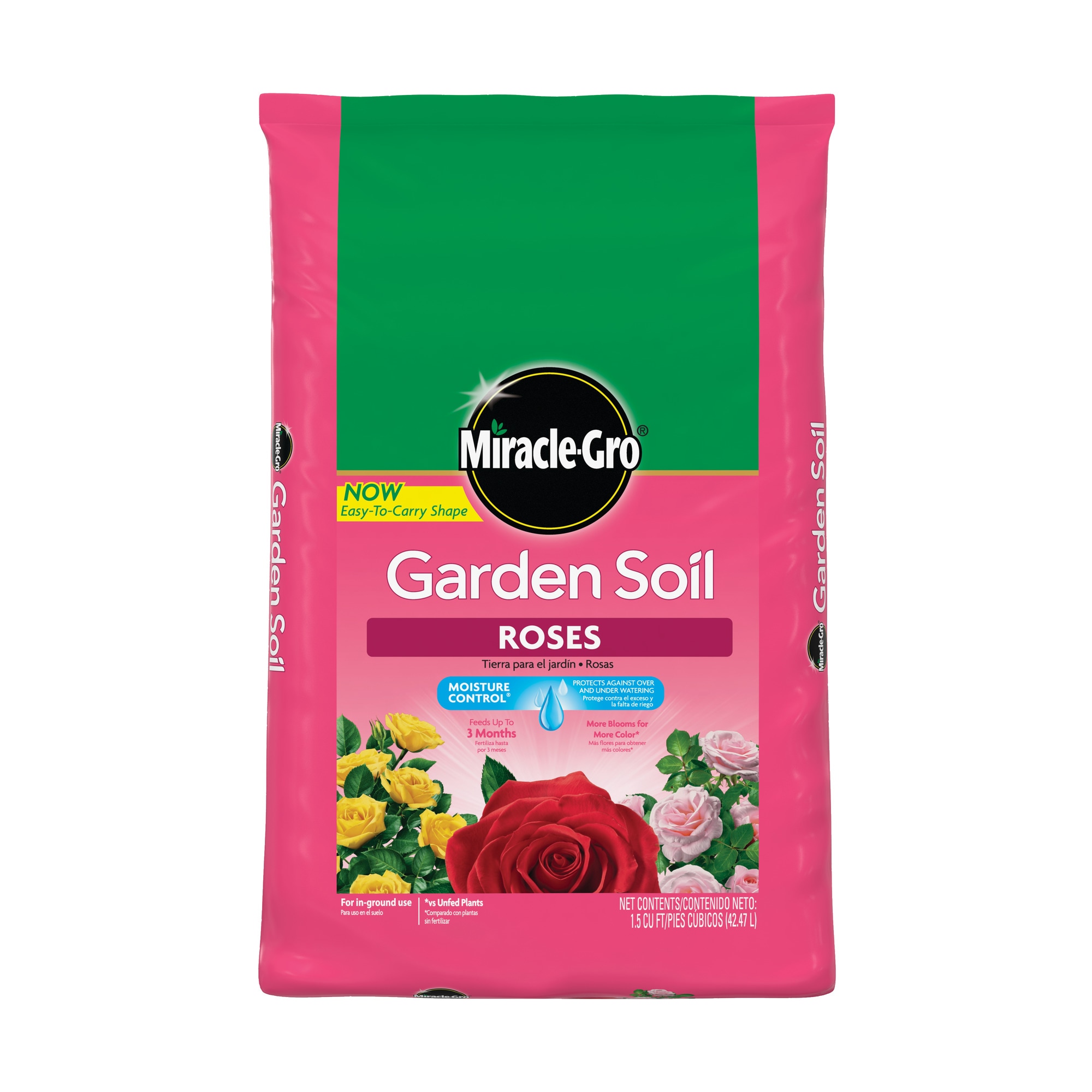
You’re considering purchasing a rose to scent the air and enjoy its summer bloom, but you’re not sure if it will thrive in your sandy soil that drains quickly.
Hardy rose varieties like Gallicas and Regosa Roses can flourish in poor-quality, sandy soils with rapid drainage. However, the rose will benefit from four gallons of water once per week, a fertilizer application once per month, and soil amendments like organic mulch to help retain water and promote soil fertility. All of these things will help assure a good bloom.
Let’s look at how to plant roses in sandy soil, which roses do best in sandy soil, how to fertilize your rose, and how frequently you should water your rose during the growing season.
Table of Contents
How to Prepare your
Sandy Soil for Rose Planting

The two main issues with sandy soil are…
- For roses to produce their best blooms, the soil is too deficient in nutrients.
- Sandy soils drain too quickly for a rose’s roots to take up water, resulting in drought-related death.
Roses do prefer well-draining soil, but sandy soils drain so quickly that plants will become excessively dry if unimproved.
The easiest way to deal with both of these issues is to add a lot of organic mulch to your soil, which will increase its fertility and help it retain the proper amount of moisture.
Planting a Rose in Sandy soil

This will provide you with plenty of room to generously mulch the hole in part, giving the rose’s roots enough of loose, fertile material to establish itself.
The ideal organic material to line your hole in sandy soil and an arid area is formed of decomposing leaf litter.
The finest substance for absorbing and holding onto water so that the roots can draw from it when they need it, to counteract the quickly draining sandy soil texture, is leaf mulch, though all organic mulches do retain water well.
The best of all worlds is achieved by using leaf mulch, which enhances soil structure and permits extra water to drain through, preventing roots from becoming flooded.
I would advise you to amend the soil around your rose with a lot of organic material after you have planted it.
By decomposing in the soil and reviving the helpful microorganisms, yeast, and fungus that all make more nutrients available to the rose, composted kitchen scraps, grass clippings, and wood chips will all improve the health of your rose.
Mulch will also provide food for the earthworms, who break down waste into incredibly rich worm castings. The nutrients in worm castings are chelated, making it much simpler for the plant to absorb and benefit from them.
Earthworms will also aerate the soil to reduce soil compaction, develop pathways for water to reach the roots, and open up room for the roots to extend down into the ground.
The plant will be healthier and more disease-resistant if regular mulch treatments enrich the soil and increase its fertility.
The easiest way to maintain rose beds is to add surface mulch three times annually:
- once in the beginning of spring to offer nutrients and aid in promoting growth.
- A second time during the hottest part of the summer to give the plant more moisture and to keep the roots cool since the bright sunlight will speed up transpiration and evaporation.
- To assist protect the roots from the rapid drop in temperature in winter, a third treatment was made at the end of the fall.
While surrounding the rose, pile the mulch 2-3 inches deep, keeping it about 2 inches away from the main stem. Take care when layering your mulch to prevent the wood from rotting if it is always wet and piled high up against your rose cane.
Watering your Rose in
Sandy Soil
In the spring and summer, all roses like a refreshing drink, although quick-draining sandy soils require extra care.
If you have added a lot of mulch to your soil, this should considerably help to solve the issue.
The greatest recommendation is to give your rose a good soak once a week with about 4 gallons (in the morning), but to also use your intuition. The amount of watering also much relies on the climate you’re in or the special weather you have that summer.
By putting your finger an inch or two below the soil’s surface, you may determine whether your rose needs watering. Your rose should be alright if you notice any moisture, but if it is completely dry, it’s time to get the hose out and give it a thorough soak.
Your rose will show indications of stress if it is too dry, including withering and yellowing leaves. At this point, you should give the rose a good soak and pile on more organic mulch around the plant’s surface to help it retain water.
Fertilizer for Roses in Sandy Soils
Because sandy soils lack nutrients, regular mulch application is crucial. However, because sandy soils tend to be particularly deficient in nutrients, you will need to use a fertilizer once a month during the growing season to make sure your rose is healthy and blooms with the maximum number of flowers possible.
Your climate will determine when to begin fertilizing. You can start fertilizing your rose in the spring just before the leaves fully open if you are certain there won’t be any more frosts from the end of winter. (Typically in March or April.)
Because the fertilizer will encourage new, softer leaf growth that is vulnerable to frost damage, you must wait until after the last frost.
After August 15th, you should cease fertilizing your rose in order to avoid encouraging new, fragile growth, which is once more more vulnerable to frost damage and will be terminated when the temperature drops in the fall and winter.
Your rose’s new growth from the growing season needs time to toughen up and get ready for its winter hibernation.
A miracle grow rose fertilizer for usage in sandy soils has worked well for me personally. With only two applications each year throughout the growing season, this fertilizer has a balanced mix of all the minerals and nutrients necessary for a robust, disease-resistant rose bush with an abundance of blooms.
As an alternative, you can fertilize naturally using alfalfa, bone meal, and fish emulsion. During the growing season, apply a combination of these fertilizers once a month.
It is important to use organic fertilizers with caution because they have a tendency to smell bad and draw flies, unlike miracle grow, which has a more benign smell and repels pests.
There may be some trial and error before you find the ideal growing conditions for the perfect bloom because each garden has different soil fertility, sunlight exposure, humidity levels, etc. However, if you have used plenty of mulch and good fertilizer and have chosen a location with adequate sunlight and water, there is a good chance that you can successfully grow roses in sandy soil.
Rose Varieties Suitable
for Sandy Soils
The hardier rose cultivars, which can thrive in less ideal conditions and yet produce stunning blooms with a sweet fragrance, are always the best option for sandy soil.
Roses from the Gallica and Regosa groupings are the best option. Due to their extreme hardiness, both Gallica and Regosa roses may continue to grow and thrive even in dry conditions and in subpar soil.
Additionally, they have a high level of resistance to pests and diseases, which can be the misery of a rose grower’s garden.
No matter how resilient a rose is, it is still essential to add a lot of mulch and give it a good bath in the dry months to give it the best chance to grow.
Regosa roses are ideal if you live near the coast because they can withstand even salty spray. My particular favorite regosa ‘Rubra’ rose produces a plenty of summer blooms as well as lovely classic pink flowers.
Regosa roses are typically easier to acquire online and at garden centers than gallica roses, but if you’re lucky enough to find one, I suggest looking for the “Charles De Mills” rose because of its abundant petals, substantial blossoms, and lovely scent.
Conclusion
In conclusion, roses can flourish and produce a profusion of blossoms in sandy soils provided they are planted with the appropriate rose type and under conditions that have been modified.
The main issues will always be giving the rose enough nutrients and access to water, therefore it’s a good idea to add more mulch to your rose garden than you typically would.
Make sure to fertilize your roses frequently if the fertility of your yard is noticeably low.
A pre-made mix is frequently the best option for nutrient-deficient soils (as sandy soils frequently are), as it takes the guesswork out of fertilizing. They are incredibly simple to use and give all the nutrients a rose requires in the proper concentration.
